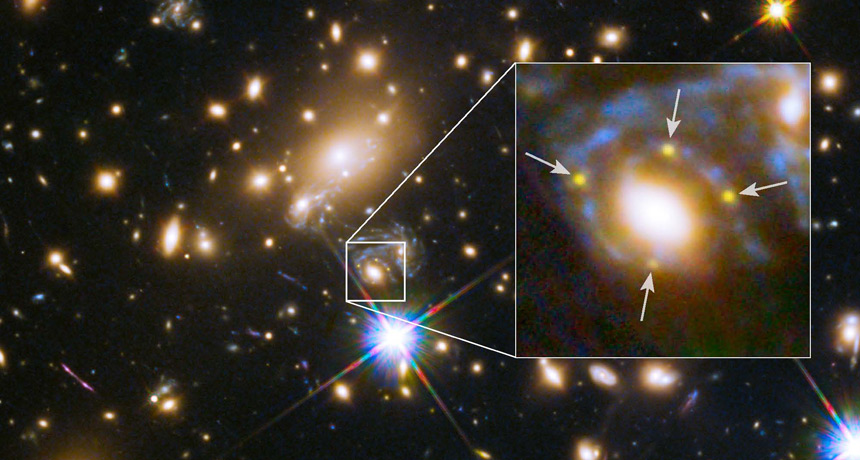Hubble telescope sees quadruple

Gravity from a galaxy (box) in this Hubble Space Telescope image bends light from a more distant supernova, creating four images of the exploding star (arrows).
NASA, ESA, and T. Treu (UCLA), P. Kelly (UC Berkeley) and the GLASS team; S. Rodney (JHU) and the FrontierSN team; J. Lotz (STScI) and the Frontier Fields Team; M. Postman (STScI), and the CLASH team; and Z. Levay (STScI)





